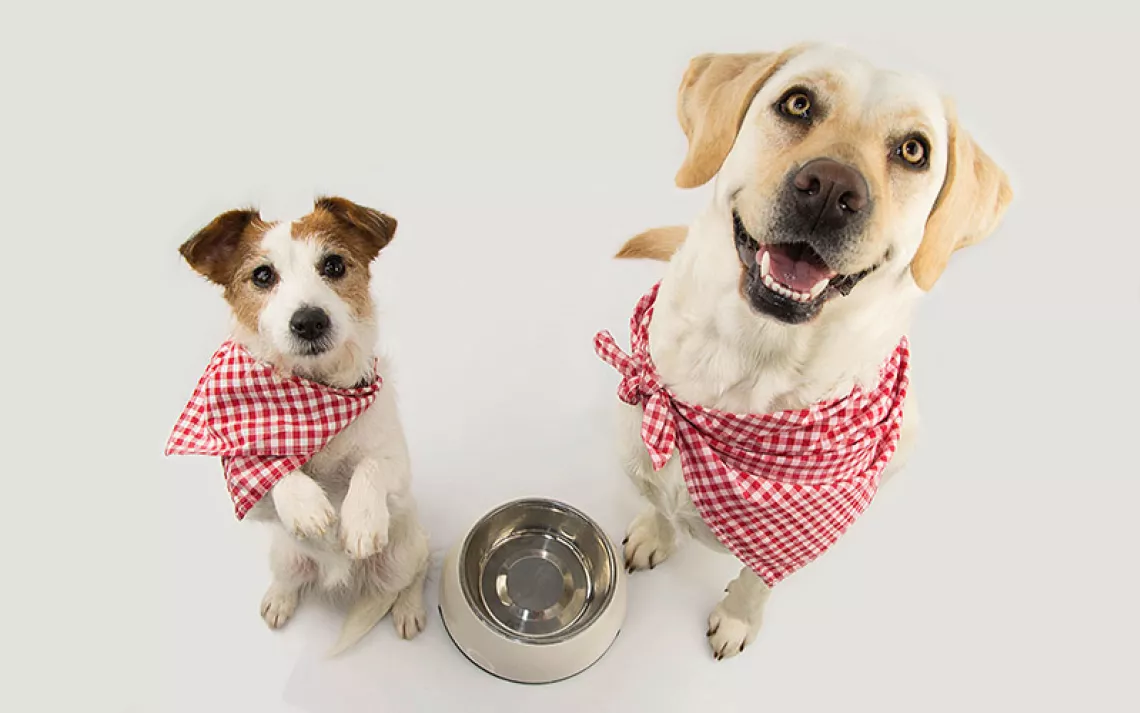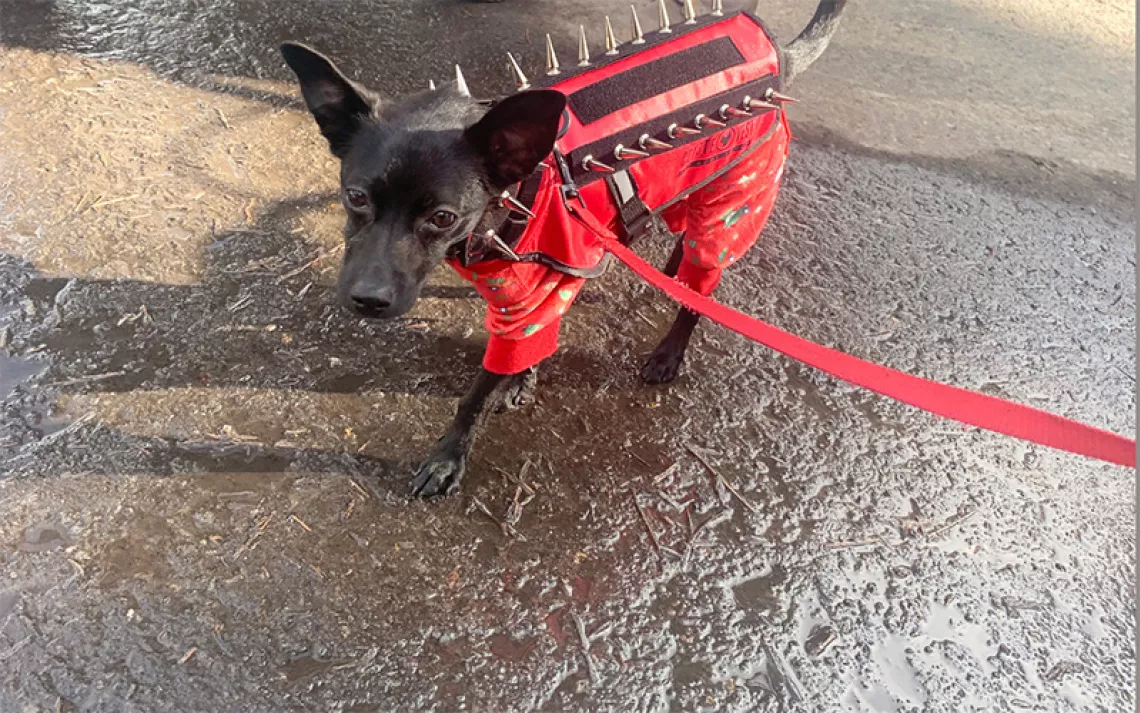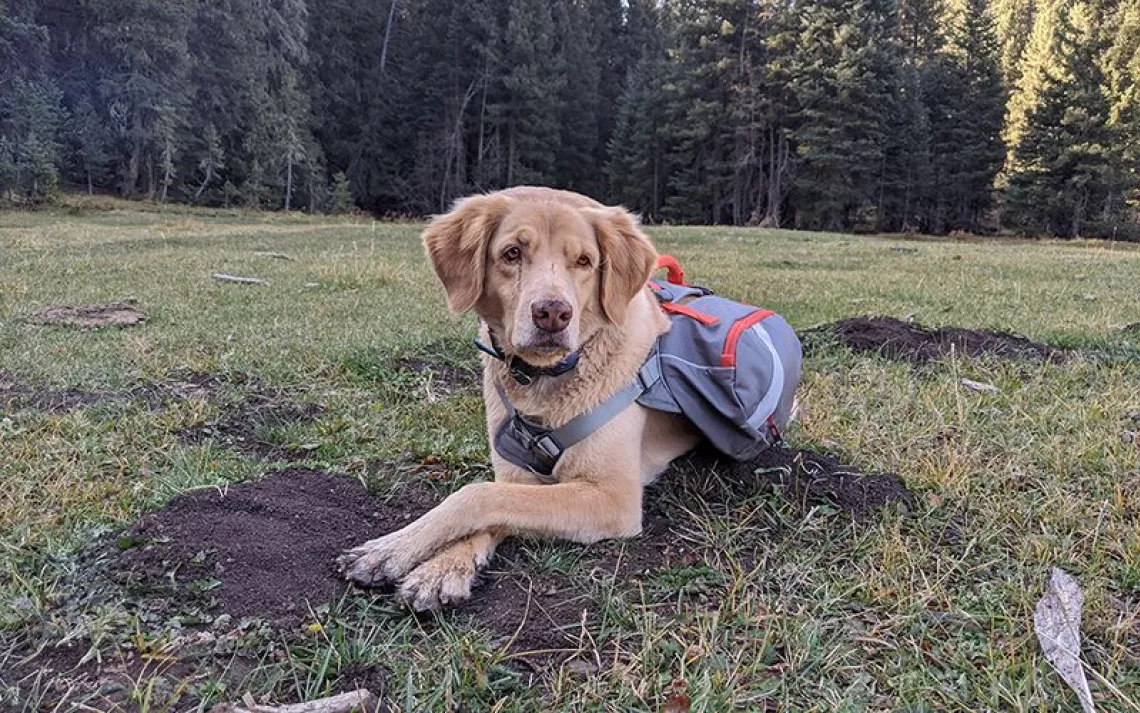How to Minimize Your Pet's Carbon Paw Print
Welcome to the era of calculating Sparky's CO2 emissions
Illustrations by Andrea Mongia
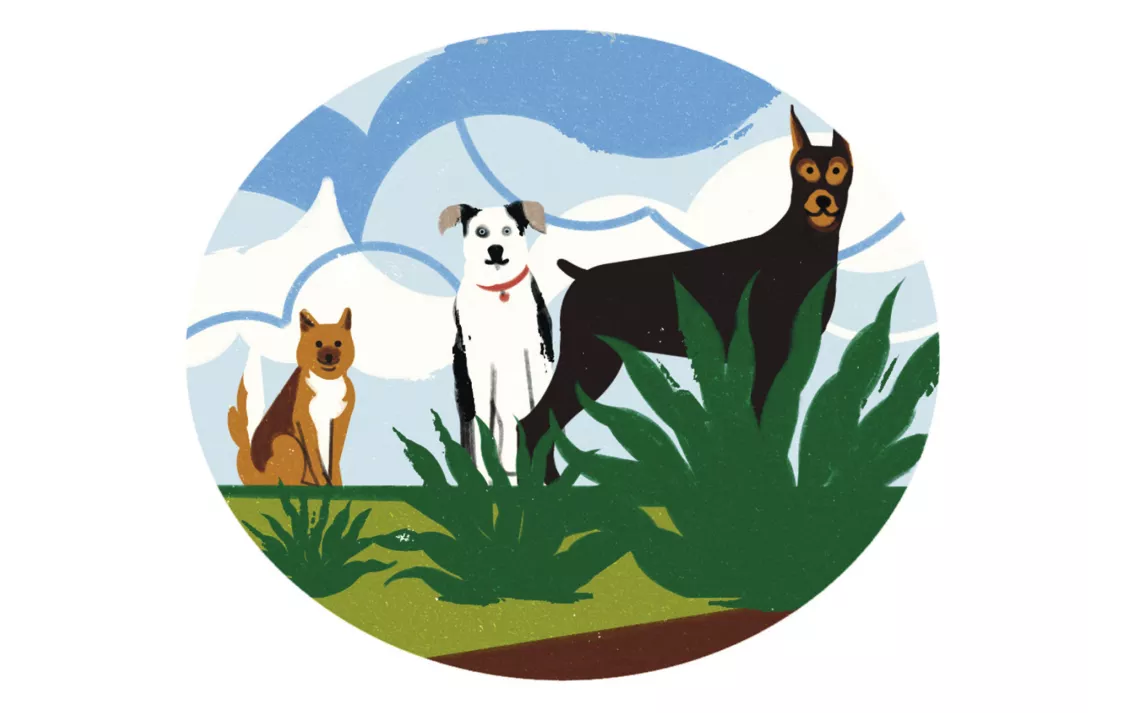
Our pets help connect us to nature. By sharing our lives with these once-wild creatures, we get more in tune with the natural world. The social and emotional sustenance we get from them makes us better Earth citizens.
But we've entered a new era: Let's call it the "calculating Sparky's CO2 emissions" phase. According to one researcher, just feeding the cats and dogs of North America emits up to 64 million tons of greenhouse gases a year. Factor in all the indirect emissions—transportation to and from the vet, the plastic-palooza that is a big-box pet store, plus all that poop—and things start to look ruff.
Happily, though, the same principles that help you live more sustainably also apply to Fluffy and Fido. What's good for the environment is also good for your pet—no compromises on tasty treats necessary.
Getting a Pet
First off, adopt; don't shop. Millions of animals are available from shelters and rescue operations, which—unlike breeders—spay and neuter their wards, reducing overpopulation. You don't need to limit yourself to a dog or a cat. Some shelters house herbivores like rabbits, rodents, goats, and reptiles (did you know some are vegan?) that would love to move in with you.
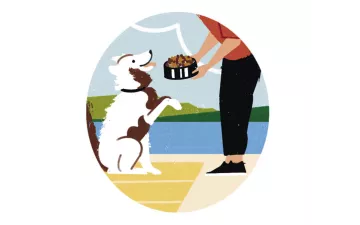
Feeding Your New Best Friend
The bulk of pets' carbon paw print stems from their diet. If Americans' 163 million dogs and cats started their own country, Fluffistan would rank fifth in global meat consumption. As more people consider their pets members of the family, the pampering and sustenance industries are responding with premium products, which is both good and bad. On the one hand, your local pet store probably carries food made with organic, sustainably farmed, perhaps even plant-based ingredients. On the other hand, people's decision to spring for "human-grade" pet food is a morally questionable choice in a country where more than 10 percent of the population is food insecure.
The truth is, pets aren't picky. They're fine with "snout to tail" consumption. Seek out Green Petfood, Royal Canin, and other food brands that incorporate rendered animal byproducts. Try treats from Chippin, made from delicious, low-impact crickets. Ask your local pet store about brands that participate in recycling programs, such as Tetra Pak.
Home-Cooked Meals FTW
The internet abounds with recipes for sustainable pet food, but talk to your vet first about your pet's specific nutritional needs. Veterinary scientist Jordan Schaul recommends prioritizing meats with the lowest carbon footprint, like chicken. You'll want to mix up equal parts of unseasoned protein (try sourcing from local farmers or butchers who have unpopular cuts and offal), raw veggies, and root veggies like sweet potato and pumpkin. Save money on treats by freezing bits of bulk peanut butter or dehydrating food scraps like sweet potato peels. No matter the grub, don't overfeed your pets.
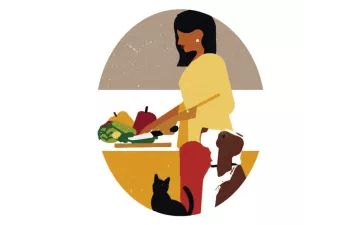
Plant-Based Pooches?
Cats are obligate carnivores that require sulfur-rich amino acids like taurine at levels typically available only in meat-based diets. But contrary to their "carnivorous wolf descendant" reputation, most dogs are good candidates for flexitarianism, if not veganism.
Caroline Buck, cofounder of Petaluma (which makes pet food formulated with protein from peanut butter, chickpeas, and peas), explains that in evolving as scavengers alongside humans, dogs grew accustomed to handling starches and glucose and "long ago became omnivores." If your dog has a meat-heavy diet, you'll want to gradually adjust its microbiome to a plant-based one.
Fun and Games
A zero- or low-waste lifestyle for your pet is more doable than you think. Look for toys made from upcycled materials, like denim or rope, and consumable chew toys. Invest in durable leashes, harnesses, and collars (check out brands like Wanderruff, which makes them out of recycled consumer plastic), and tell your local pet store how much you prefer plastic-free goods. As with human wares, supporting local companies saves emissions, and DIY is always the most climate-friendly option. Remember, pets aren't fussy, so get creative with leftover rope, cloth, and cardboard. Schaul says that your feline doesn't need a fancy cat condo—"your bookshelf is just as stimulating"—and your dog doesn't need to travel great distances to Insta-worthy dog beaches and trails. As long as dogs are getting out regularly and enjoying olfactory stimulation, nearby fields and parks make for epic outings. Do wildlife and plant ecosystems a favor by keeping dogs on leash in all but designated off-leash areas. And if your cat enjoys the great outdoors, consider a "catio," which keeps your puss from wreaking havoc on birds and small mammals and potentially passing on deadly pathogens via its feces.
Beautifying Your Pet
Check for shampoos and other grooming products that are free from unnecessary chemicals, artificial dyes and fragrances, parabens, sulfates, and mineral oils. DIY salves or options from Green Groom and Buddy Wash are better for both planet and pet.
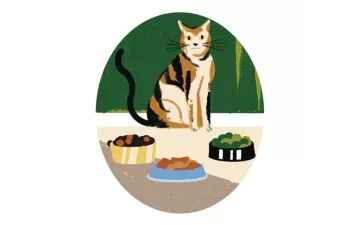
When Nature Calls
All that food has to end up somewhere. America's pets produce over 5 million tons of feces a year—more than that of 90 million Americans. When cleaning your yard, scoop the poop into trash bags you're already using. Better yet, consider flushing your dog's waste down the toilet (but never your cat's—toxoplasma, a parasite found in cat feces, can infect marine life). You can also compost dog waste: Schaul says that you'll need a mix of nitrogen-rich materials like food waste and grass cuttings, and carbon-rich materials like sawdust or leaves. For cats, avoid kitty litter containing bentonite clay, which comes from strip mines, and look into biodegradable options like Yesterday's News by Purina and Cedarific by Nepco. If you must use puppy pee pads, get machine-washable ones.
Saying Goodbye
We all hate to think about our pet dying, but a little advance planning can soften the heavy eco-punch of pet interment. Look into biodegradable caskets and urns (Passages International makes them from willow, mulberry bark, and recycled cardboard). Cremation is generally safer and more sustainable than burial. Backyard burial is illegal in some states and can pose dangers to animals that may scavenge your pet's body—diseases and lingering euthanasia drugs can be passed on this way. Honor your departed pet's legacy by donating used toys, bowls, and bedding to your local shelter (but first check to make sure it accepts them).
This article appeared in the Summer 2022 quarterly edition with the headline "How to Minimize Your Pet's Carbon Paw Print."
 The Magazine of The Sierra Club
The Magazine of The Sierra Club
